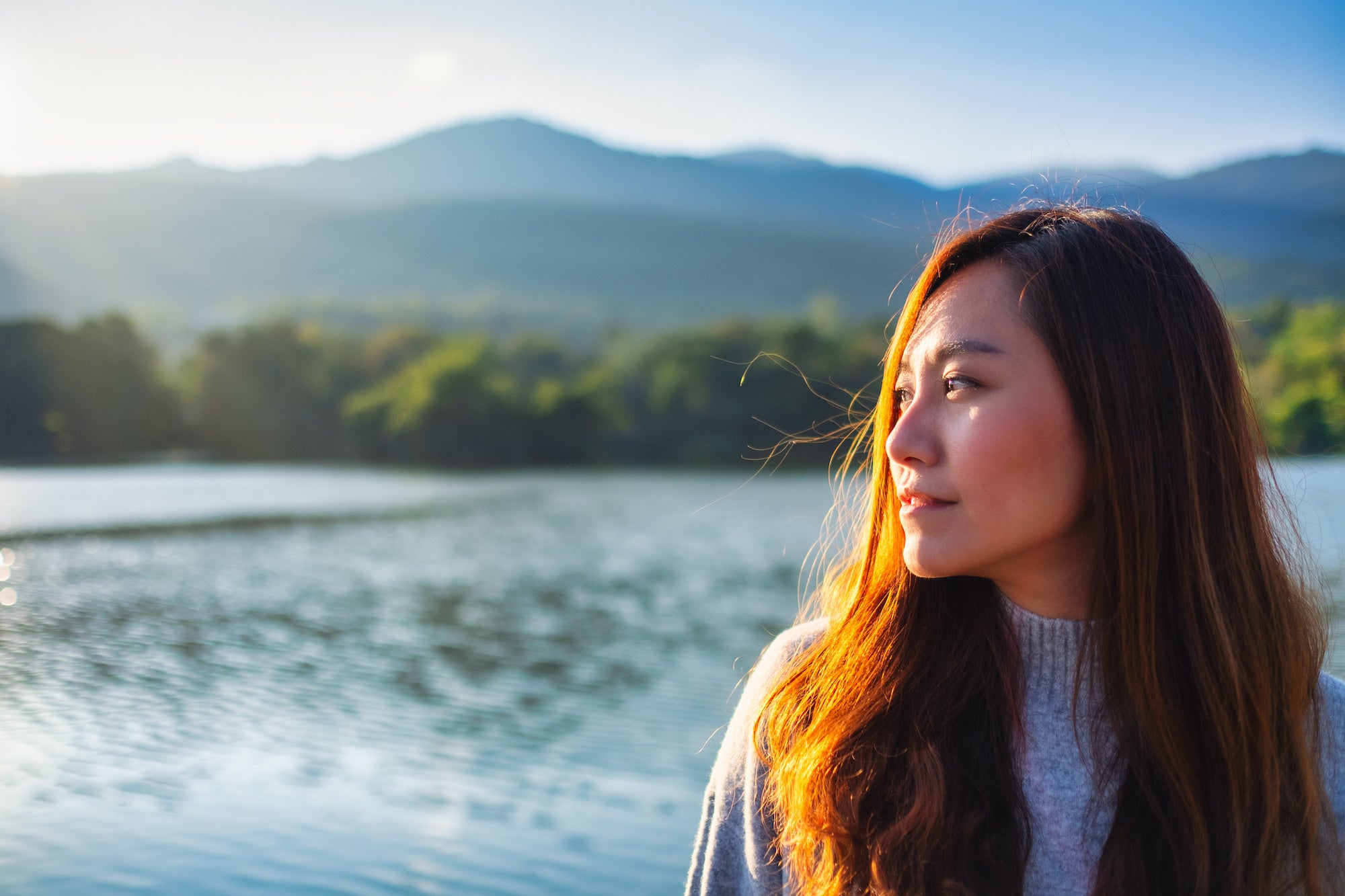
Acne Vulgaris: Your Complete Acne Guide
By the time you reach twenty, everything is laced with wonder and discovery! As soon as we hit those years, we start to see the world a little differently. Newfound responsibility, newfound freedom...newfound zits!
Acne scars, breakouts, and cysts can make those golden years miserable! And just when you think it might get better, adulthood picks up the baton to continue the acne race.
When does it end? Sadly, you'll have to talk to someone older than me.
The good news is that we can turn this mess of a story into a clear-skin message!
Here is everything that you could ever want to know about acne vulgaris, AKA acne, and a little insight on how to get rid of it!
What is Acne Vulgaris?
It all starts with the notorious B.I.D- bacteria, inflammation, and dead skin.
When bacteria invade the skin, it mixes with excess sebum (oil) and dead skin. This combination can lead to clogged pores and ultimately result in whiteheads, blackheads, and cysts.
The interesting part is that acne vulgaris (the scientific term for everything acne) is a toss-up. Each new zit can be completely different from the last, but the culprits remain the same.
The common places to see acne vulgaris are the face, upper chest, and back. Why? Acne vulgaris is attracted to the densest parts of the skin that contain the most sebaceous glands.
Sebaceous glands are responsible for producing and releasing sebum onto the skin's surface while helping the skin stay moisturized and protected. They also house hair follicles.
Acne vulgaris can be a pain, but at least it’s predictable and caused by the same combination!
Types of Acne Vulgaris
Whiteheads or blackheads? Usually, our knowledge of acne stops there, and we often don't know the overarching terms within the acne vulgaris family.
Those terms are comedones, papules, pustules, nodules, and cystic.
Here is a helpful breakdown of each, get your pen and paper ready!
1. Comedones
Comedones are often caused by debris like oil and dead skin, which block the sebaceous duct, causing inflammation underneath the surface of the skin. Commonly found on the forehead and chin, comedones are the most common form of acne vulgaris.
What do they look like? Well, there are five categories.
- Open comedones are what we know as blackheads. These have a black end because of surface pigment or melanin, not dirt.
- Closed comedones are called whiteheads.
- Microcomedones are tiny bumps that are usually not visible but can be felt under the skin.
- A giant comedo is a cyst that has the same appearance as a blackhead but larger.
- Solar comedones are the result of sun damage and often have the appearance of sunspots on the cheeks and chin.
2. Papules and Pustules
Papules and pustules originate from comedones and are largely inflammatory-based acne.
What do they look like?
Papules are usually small bumps with a pink or reddish tint. Shaped like a dome, they are pretty hard to miss. When clustered together, they can look like a rash and feel very rough to the touch.
Pustules are your classic pimple. They can be filled with yellowish pus, which is a mixture of bacteria and dead, white blood cells.
3. Nodules
Nodular acne occurs when the skin becomes very inflamed and is at risk of infection. If infection happens, it can sit within the deep layers of the skin. This can cause the affected pores to become swollen and red.
A more severe form of acne, nodular acne is unlike the other acne types, and often can't be cleared up by a $2 cleanser. Bring in the heavy all-natural products for a nodular acne attack! (That’s right folks, you heard it here first!)
What does it look like?
Nodular acne can appear as a small bump underneath your skin. It may not be red at first but can gradually turn red depending on how inflamed the infection site gets. The fun news: it doesn't have a "head," so that means you can't pop it! Which saves you from the temptation!
P.S. Nodular acne is also painful, so just leave it alone in general.
4. Cystic acne
Last but not least, ladies and gents, cystic acne!
This is the most severe type of acne and develops deep within the skin. Cystic acne is more common in those with oily skin because there is a constant oil supply. It can also last for years if left untreated.
Cystic acne is like Roger on Sister, Sister (if you haven't seen this show, see it!). It keeps coming again and again and is extremely hard to get rid of! Cystic acne typically presents stubborn and painful bumps that don't just disappear on their own. They can look like clusters of inflamed patches that vary in size and shape.
If you suspect that you deal with this type of acne, switch to an all-natural routine today. It will make all the difference!
What Causes Acne Vulgaris?
As we just discovered, acne is not a one-size-fits-all-all! There are many reasons people deal with acne throughout their lives, and the root cause can vary from person to person.
Here are a few of the most common reasons you may be experiencing acne.
1. Genes
Whether we like it or not (and most of us hate it!), genes can play a part in almost everything. Research has shown that 81% of the conditions we encounter can be the result of inheritance, and acne is unfortunately no different.
Now, before you go blaming your parents, similar genetic traits can show up between a variety of family members. One study showed a connection between a set of twins and first-degree relatives. Acne, truly, has no bounds.
While this may be discouraging, don't let your dream of clear skin disappear! There are skincare products that are ready to tackle acne-prone skin, no matter the reason. Our Clear Skin Kit is packed full of vital acne-fighting nutrients and minerals.
Thousands of customers have found their acne and acne scars diminish after years of problematic skin! So the next time that you're at your family reunion show off that face and tell your closest kin that there is hope!
2. Hormones
Hormones can make everything tricky and confusing! From periods to hormonal conditions such as PCOS and endometriosis, there can be a lot going on around the clock.
The root, however, begins with androgens. These hormones can increase in both boys and girls during puberty and trigger the sebaceous glands. This increase can result in larger than normal glands that make more oil and can be an Achilles heel for a person with persistent acne.
For those who may only deal with acne in their teens and then experience it again later in life, certain hormone-altering events could also be at fault. These situations include pregnancy, beginning birth control, and various hormonal imbalances that show up later in life.
3. Diet
Ever had a cheat meal and paid for it with a fresh batch of zits?

Epic Cheat Meal- isn't she a beaut!
The truth is that certain foods have a higher chance of causing inflammation and triggering excess oil production.
Studies have shown that dairy and carbohydrate-rich foods— such as bagels, donuts, and even pasta— may worsen acne.
Also, sugar is the number 1 offender! High sugar content levels can cause blood sugar to spike and lead to excess oil.
While the relationship between acne and food is yet to be discovered, try keeping dairy, sugar, and fast food to a minimum (more on this later)!
4. Stress
The science behind stress and acne is growing, but it is understood that stress causes acne through an increase in stress-related hormones. Hormones, like cortisol, can send the oil-producing gland into a fit that causes an overproduction of oil on the skin. Not only this but when that oil is mixed with dead skin and breakout-causing bacteria, it's acne city!
Studies have even shown that people who had an increased amount of stress in their lives had more severe acne than those with milder stress.
Long-Term Effects of Acne Vulgaris
This is what I like to call bonus information! While acne scars are not exactly in the lineup when it comes to acne vulgaris, they are often the lasting reminders of breakouts. Acne scars need special attention, so here is some information to help you.
Scars
Acne scars are caused by inflammation that is trapped within the skin. Once this happens, the pore housing all of the dead skin and bacteria swell to the point that the follicle wall breaks. And just like that, a scar is born!
The rupture that happens underneath the skin will determine what kind of scar you have and what size it will be. Scarring can also cause permanent discoloration of the skin. So, be on the lookout for any new acne and try to get on top of it as soon as possible. This will reduce the chances of scarring.
Acne Vulgaris Treatment
While acne vulgaris can cause your skin a world of trouble, all hope is not lost! There are so many ways for you to reach your clear skin goals!
1. Reevaluate Your Skincare
One of the biggest ways to combat acne is to do a major overhaul of your skincare routine. Many of us use whatever we can find on the grocery store shelves and go from product to product because we feel that we have no other choice.
But what if I told you that you do have a choice? Tens of thousands of women have decided to put problematic skin behind them and invest in something that has been proven to work. Our Clear Skin Elixir is the ultimate acne-fighting product and the best part? You never have to worry about what is going on your face because we only use the finest, all-natural ingredients.
The bonus: We're cruelty-free.

It's never too late to level up!
2. Cut Out Acne Causing Foods
While skincare is uber-essential, you can't expect it to do all the heavy lifting, especially if your usual diet consists of cookie dough and cheeseburgers.
If you want clear skin, you'll have to do the hard work just like everyone else. Diet is an integral part of a clear skin journey, so here are some no-no foods to help you out!
3. Dairy
Dairy has been known to cause inflammation within the skin and can ramp up the overproduction of oil. While this may not sound like such a big deal- it is.
Remember from above that excess oil and inflammation are part of the acne cycle. Dairy contains components that are related to testosterone, which is a hormone. Once you consume dairy may stimulate the skin's oil glands and ultimately bring you full circle to acne. Why tempt fate if you don't have to?
4. Sugar
Sugar is one of those things that many of us can't live without but need to. From cakes to the occasional fruits that just so happen to be high in sugar (i.e., watermelon and ripe bananas), you have to be careful. When your blood sugar spikes, oil production is out of control!
Just say, no!
5. Fast Food
The usual offender, fast food is terrible for your overall health and the health of your skin. Why?
Fast food is primarily made up of refined grains and sugar, not to mention artificial meats that aren't all-beef.
This is going into your body and causing digestive problems that affect your skin.
Don’t Forget Your Vitamins
Fun fact: Supplements can improve both your overall health and the health of your skin!
If only someone had told me this a long time ago, I wouldn't have wasted so much money on random products (like a face mask that promised to heal all of my scars overnight!).
Often, we are missing vital nutrients in our system and are severely lacking everything we need for our skin's health. If you have wondered why you couldn't achieve, "I've done nothing but wake up" skin, a few of the supplements I mention in my blog, The Best Supplements for Acne, will help!
Hint: You can find most of these in your local grocery store! Steal!
Take Self-Care Days
This last tip is often overlooked, but shouldn't be discounted! Taking time for yourself will show in every area of your life and ultimately affect your skin. A little pampering goes a long way!
Do spa day your way and let your skin soak up all the love you can give it! Relax, use our Clear Skin Elixir, and sip on some sparkling water!
You only get one beautiful face! So, treat it well.
Cheers to many acne-free days!






